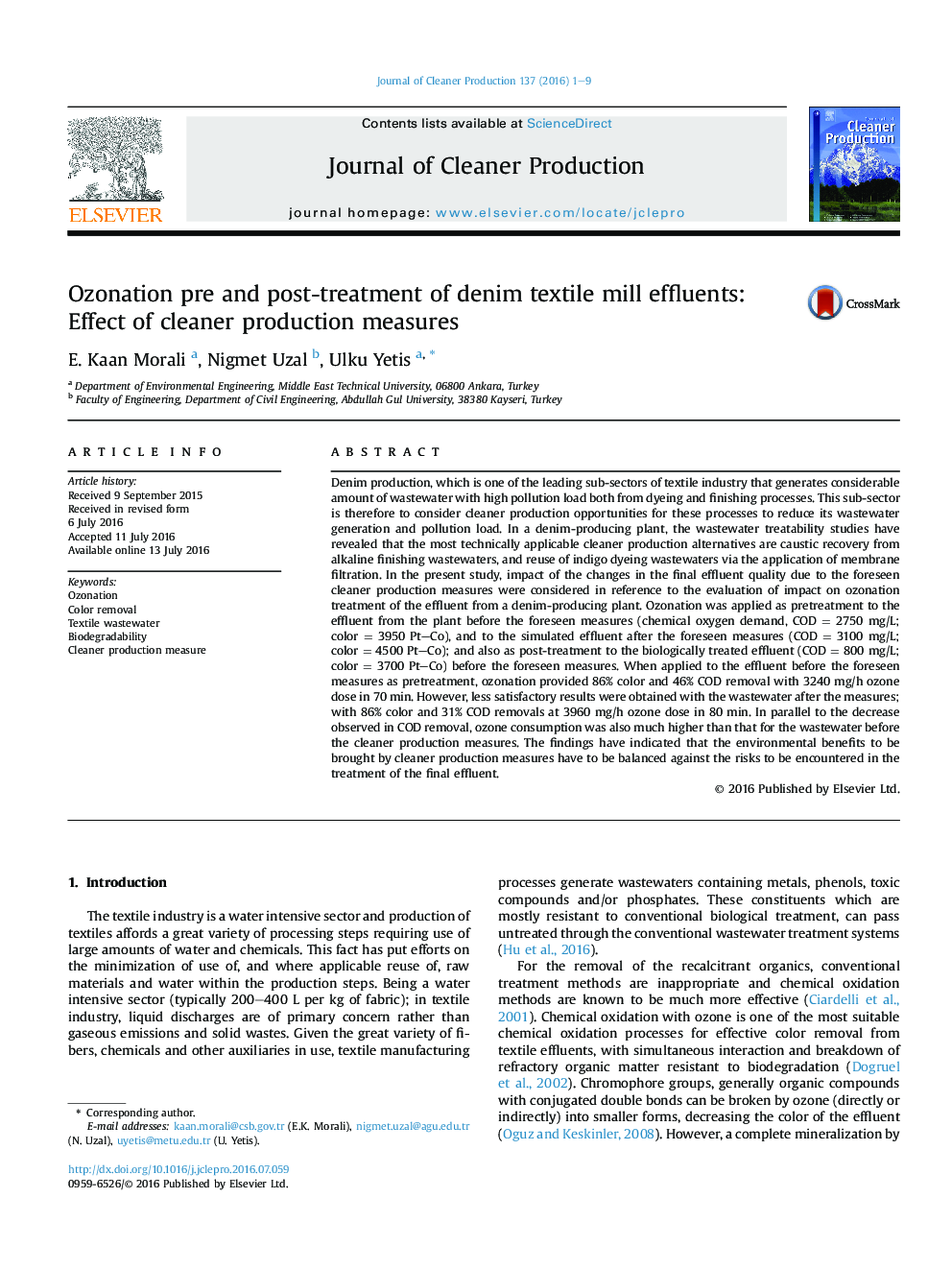| کد مقاله | کد نشریه | سال انتشار | مقاله انگلیسی | نسخه تمام متن |
|---|---|---|---|---|
| 8100744 | 1522114 | 2016 | 9 صفحه PDF | دانلود رایگان |
عنوان انگلیسی مقاله ISI
Ozonation pre and post-treatment of denim textile mill effluents: Effect of cleaner production measures
ترجمه فارسی عنوان
پس از زهکشی قبل و پس از درمان جلبک آجری جین: اثر اقدامات تولید پاک کننده
دانلود مقاله + سفارش ترجمه
دانلود مقاله ISI انگلیسی
رایگان برای ایرانیان
کلمات کلیدی
پرتقال، حذف رنگ، فاضلاب نساجی، تجزیه زیستی، اندازه گیری پاک کننده
موضوعات مرتبط
مهندسی و علوم پایه
مهندسی انرژی
انرژی های تجدید پذیر، توسعه پایدار و محیط زیست
چکیده انگلیسی
Denim production, which is one of the leading sub-sectors of textile industry that generates considerable amount of wastewater with high pollution load both from dyeing and finishing processes. This sub-sector is therefore to consider cleaner production opportunities for these processes to reduce its wastewater generation and pollution load. In a denim-producing plant, the wastewater treatability studies have revealed that the most technically applicable cleaner production alternatives are caustic recovery from alkaline finishing wastewaters, and reuse of indigo dyeing wastewaters via the application of membrane filtration. In the present study, impact of the changes in the final effluent quality due to the foreseen cleaner production measures were considered in reference to the evaluation of impact on ozonation treatment of the effluent from a denim-producing plant. Ozonation was applied as pretreatment to the effluent from the plant before the foreseen measures (chemical oxygen demand, COD = 2750 mg/L; color = 3950 PtCo), and to the simulated effluent after the foreseen measures (COD = 3100 mg/L; color = 4500 PtCo); and also as post-treatment to the biologically treated effluent (COD = 800 mg/L; color = 3700 PtCo) before the foreseen measures. When applied to the effluent before the foreseen measures as pretreatment, ozonation provided 86% color and 46% COD removal with 3240 mg/h ozone dose in 70 min. However, less satisfactory results were obtained with the wastewater after the measures; with 86% color and 31% COD removals at 3960 mg/h ozone dose in 80 min. In parallel to the decrease observed in COD removal, ozone consumption was also much higher than that for the wastewater before the cleaner production measures. The findings have indicated that the environmental benefits to be brought by cleaner production measures have to be balanced against the risks to be encountered in the treatment of the final effluent.
ناشر
Database: Elsevier - ScienceDirect (ساینس دایرکت)
Journal: Journal of Cleaner Production - Volume 137, 20 November 2016, Pages 1-9
Journal: Journal of Cleaner Production - Volume 137, 20 November 2016, Pages 1-9
نویسندگان
E. Kaan Morali, Nigmet Uzal, Ulku Yetis,
